Best Portable Audio Recorder
Whether you are doing podcasts, film or music, one of the easiest ways to improve your production values is to take a look at the type of device into which you are recording your audio. Integrating a portable digital recorder into your rig is a great way to improve your audio quality.
When I came to shoot my micro budget feature 10 years ago, the Zoom H4n Handy was quickly becoming a favourite portable recorder. Since then, the Zoom range have become even more popular.
What is a portable audio recorder?
A portable audio recorder is a small digital (usually) recording device for capturing audio of any kind: actor’s dialogue, music, sounds effects (foley in filmmaking terms), rehearsals, interviews, lectures, live music or performances and so on.
Portable audio recorders are used by semi-pros and professionals, and generally include advanced types of microphone builds, additional audio recording features and room to add extra memory space.
Do you need one for filmmaking?
With smartphone filmmaking, we often aim to record audio directly onto our smartphone. We can even consider using an extra smartphone (other than the one we’re filming with) as a dedicated audio recorder.
However, having a dedicated audio recorder can not only greatly improve the quality of audio captured but can also free up your smartphone from being encumbered by external microphones.
I’ve hunted around, but it seems Zoom and Tascam are essentially the only real players in this game. Checking through some popular lists which include other models, I’ve found those models either to be not fit for filmmaking purposes or discontinued (mostly the latter). Therefore, we find ourselves with a faceoff between these 2 portable recorder giants.
However, you might want to look at the Marantz Professional PMD-561 or the Philips DVT7500 for comparison. There’s also the Sony PCMD100, but at a price considerably higher than the equivalent Zoom or Tascam models.
Zoom H4n Handy
The Zoom H4n Handy has built-in XY stereo mics adjusted to 90 or 120 degrees, depending on your needs. I know someone who used one of these to record audio for her doc which went on to win some prizes. She said she would simply sit the recorder in the room somewhere and set it recording. The 2 inbuilt mics doing a good enough job.
But if you want to add external mics (as I nearly always do), the H4n also has two LR/TRS inputs with locking connectors. The H4n records directly to SD/SDHC cards up to 32 GB. As I say, I bought mine 10 years ago and it’s still working perfectly (even after the battery cover broke off).
Recording and playback audio up to 24-bit/96 kHz with a noise floor of -120 dBu EIN. Like the Tascam below, the H4n is capable of recording up to four tracks simultaneously: two inbuilt stereo mics and two XLR/TRS combo inputs.
I found them to be reliable and durable machines, cased in rubber so they survive small knocks, drops and spillages.
Aside from the H4n, Zoom do a range of equally popular portable audio recorders, starting at the Zoom H1n Handy Recorder up to the H6.
Zoom H1n Handy
The Zoom H1n Handy Recorder is the most affordable, pocket-sized and feature-basic of the range. The mini Zoom has inbuilt 90° X/Y stereo mic, designed to handle up to 120 dB SPL. It also has a single ⅛” stereo mic/line input which lets you record with an external microphone. It comes with a 2GB micro SD card but you can upgrade if you need more recording space.
As with the H4n and other models, you can choose to record audio in MP3 or WAV file format. MP3 is reduced quality but takes up less space on the SD card. As with other Zoom recorders, ease of use is a major plus. Weight 226 grams.
Zoom H2n Handy
The H2n Handy has 5 inbuilt microphones and 4 recording modes: X/Y, Mid-Side, 2-channel surround and 4-channel surround. Useful for the creation of 360-degree ‘Spatial Audio’ VR audio files which are native to the Google Jump Virtual Reality Platform.
If you want the extra audio quality of balanced XLR inputs, then you need to look elsewhere. However, this recorder will do a great job for podcasting and other applications. The audio will still be good and the multiple mic system gives you a very adaptable set up in a small device. Set it up between interviewer and interviewee, catch concert or rehearsal audio or use it for spacial room ambience.
Zoom H5 Four-Track
The Zoom H5 is a a little sibling to the H6 that is capable of four-track recording as opposed to six. The device uses a system of interchangeable input capsules that can be swapped out (sold separately). Like the others in the series, the H5 is robust and durable. The little menu wheel with its integrated pushbutton switch is very intuitive to use with just your thumb.
Being in the top end of the Zoom recorder price range, this device has a long list of other features: four-track recording, two mic/line inputs (XLR/TRS), fits microSD cards up to 32 GB, phantom power, up to 24-bit/96kHz audio in BWF-compliant WAV or a variety of MP3 formats, transport controls on the front, inbuilt processing with filters and an auto-record function.
Down to their robust construction, the Zooms from the H4n model and up can be a little more bulky than others. They also eat through batteries.
Zoom H5 Four Track Recorder on Amazon
MSH-6 MS (Mid-Side) mic capsule: allows capture of fully mono-compatible stereo image that can be adjusted after recording.
SGH-6 Shotgun mic capsule: adds a professional-quality, highly directional shotgun microphone to your H5.
You can also add a module to expand the inputs from 2 to 4.
Zoom H6 Six-Track
Capable of recording and playing up to six channels of audio at a time, the H6 features 4 combination XLR/TRS inputs (upgradable to 6) and a stereo mic capsule. Like the H5, the H6 has a modular mic system.
The H6 has direct recording to SD cards up to 128GB. The four mic/line inputs with XLR/TRS combo connectors have dedicated volume controls for each. They’re also selectable for phantom power.
Paired this with a couple of lavaliers and a shotgun condenser and you can get comprehensive audio for your film.
One of the biggest rivals to the Zoom range are Tascam’s portable recorders. When I was an aspiring musician (too long ago to feel comfortable about), we had a Tascam portastudio. The machine recorded 4 tracks onto household cassette tapes (it was recommended to use more costly “pro” cassettes, however). This revolution brought multi-track recording to ordinary musicians who could create complex production at a fraction of the price of hiring a studio.
If 4 tracks wasn’t enough, you could “bounce” 3 tracks of audio onto 1 mono track, then record over the 3 tracks with new instruments. You could even keep going, bouncing into infinity. There was a little loss of audio quality each time you did so, so 1 or 2 bounces were the general limit.
It looks crude now, but at the time we had a huge amount of fun learning to write and produce 3 minute pop songs.
But back to the 21st century…
TASCAM DR-40
The Tascam DR-40 is considered a direct competition for the Zoom H4n, with its similar 4-in 2-out set up. But there’s one difference: the DR-40’s internal stereo mics can be switched between XY and AB recording patterns. Also, with it’s dual recording you can capture a safety track. The idea is to set each track at different levels in case of sudden spikes and audio distortion.
The 4-track recording allows you to record with the inbuilt microphones and external mics at the same time, up to 96Hz/24-bit resolution. The XLR / TRS inputs are balanced and provide phantom power if needed.
The DR-40 is cheaper than the H4n, but most complaints seem to regard cost of repair (like replacement battery covers for example). This might be a concern, considering the DR-40 is less robust than the Zoom equivalent.
Tascam DR-05
Tascam’s pocket-sized portable recorder. Perhaps a little cheaper than the Zoom H1n, but does a similar job. Has inbuilt stereo mics, but with an omnidirectional polar pattern. There’s a stereo mini headphone jack which can be used for external stereo microphones and/or external line input. Again, records in MP3 or WAV format at a similar quality to the H1n.
Other features include limiting, low cut filtering and a built-in chromatic tuner. Two AA batteries are enough to power the recorder for 17 1/2 hours. Weighs 116 grams without battery (compared to the H1n’s 226 grams).
Tascam DR-70D
Designed more specifically for film and video work, the DR-70D has 4-track recording via four XLR microphone inputs. Each channel can also have its own low cut filter as well as its own limiter.
Unlike the above, this isn’t a recorder you will be holding in your hand. You’ll either rest it on a stable surface, or even mount it to your DSLR camera or smartphone grip. But you’ll be using something more akin to what a professional sound recordist would use in the field – and it’s not too expensive either.
The DR-70D has an inclined display that’s easy to read and provides separate level information for each channel. Although bigger than the handheld recorders, it’s still relatively mini enough to carry around. Having said that, it’s over a kilogram (2.6 pounds) so there’s definitely a step up.
The Zoom hand recorders are great, but you need to go to the H6 to get to four channels. The quality of the Zoom units is very good, but the preamps in Tascam products perhaps have the edge. The DR-70D has 2 inbuilt mics but not great ones – these Tascams are designed for use with external mics.
Tascam DR-60DMKII
Stepping down in price, the DR-60MKII features two combo XLR/TRS inputs with phantom power, a stereo 3.5mm mic input, and a stereo 3.5mm camera input. As above, this model has 4 track recording at 44.1/48/96kHz, 16 or 24-bit, WAV/BWF format.
Although it has less inputs than the DR-70D it weighs more – 1.4 kg (3.25 pounds). One thing about both these Tascams is they burn through the batteries once you start adding powered mics. If your budget is limited and you don’t need more than two XLR inputs then the DR-60 MKII then save the extra $100 or so. But bear in mind the slightly more bulky design and weight.
If you have a bigger budget, you can also look at the Zoom also has 2 field recorders. The F4 and the F8.
The MixPre-3 Audio Recorder/Mixer and MixPre-6 are others to consider at this price level.
Eager to learn more?
Join our weekly newsletter featuring inspiring stories, no-budget filmmaking tips and comprehensive equipment reviews to help you turn your film projects into reality!
As an Amazon Associate I earn from qualifying purchases.
Simon Horrocks
Simon Horrocks is a screenwriter & filmmaker. His debut feature THIRD CONTACT was shot on a consumer camcorder and premiered at the BFI IMAX in 2013. His shot-on-smartphones sci-fi series SILENT EYE featured on Amazon Prime. He now runs a popular Patreon page which offers online courses for beginners, customised tips and more: www.patreon.com/SilentEye




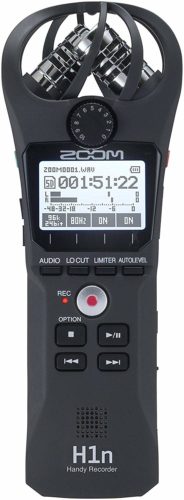

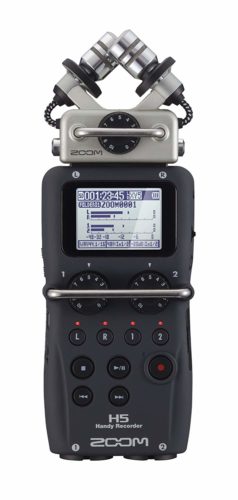
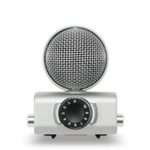

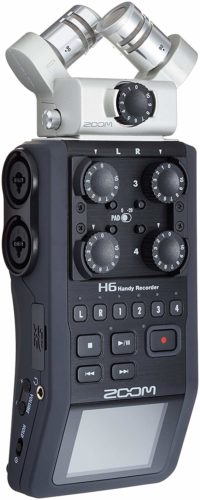
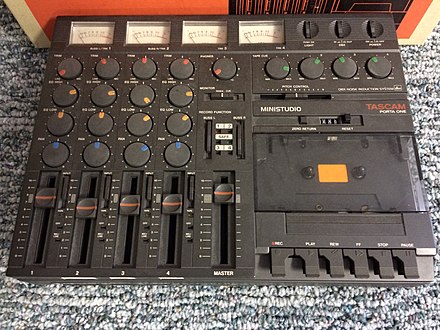
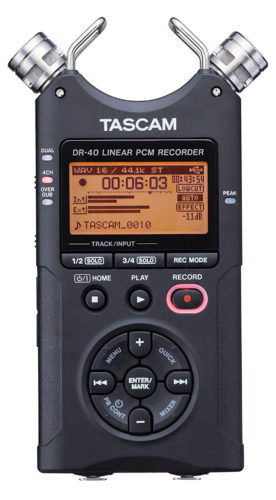
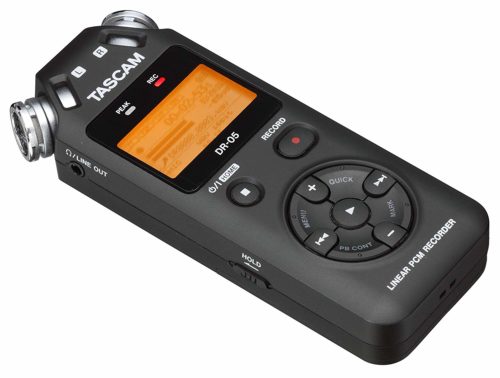
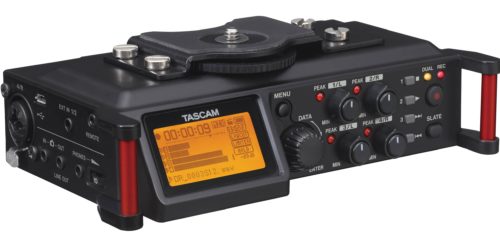
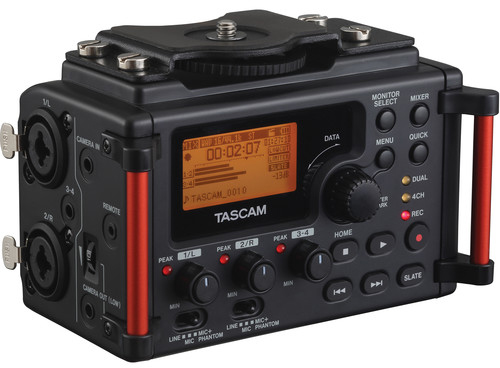
Also well worth looking at the Sound Devices Mix Pre-3 and 6, which deliver awesome sound and build quality. I recently bought a Mix Pre-3, having been a bit frustrated by the controls on the Tascam DR-40, particularly a lack of control over the headphone output. The Mix Pre is slightly more expensive than some of the prosumer devices, but vastly superior in terms of quality.
Thanks Mark. Will give it a look
CEntrance Mixerface r4r